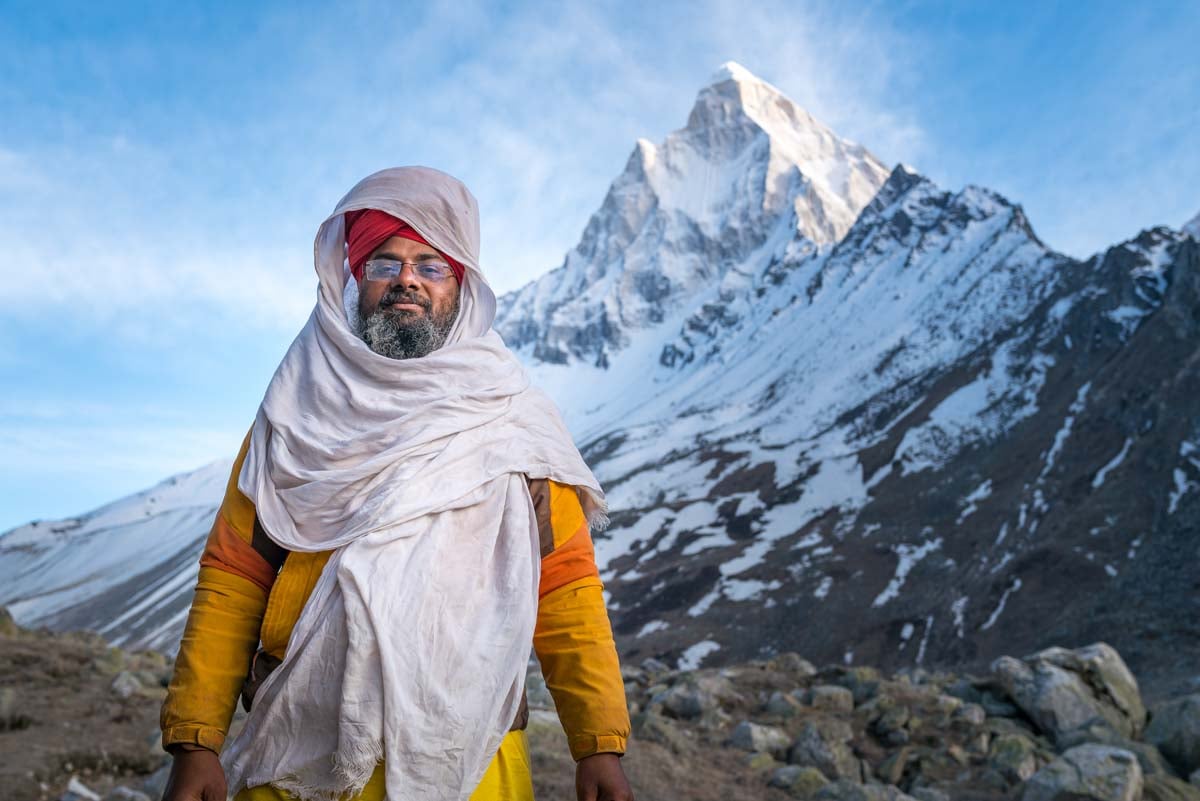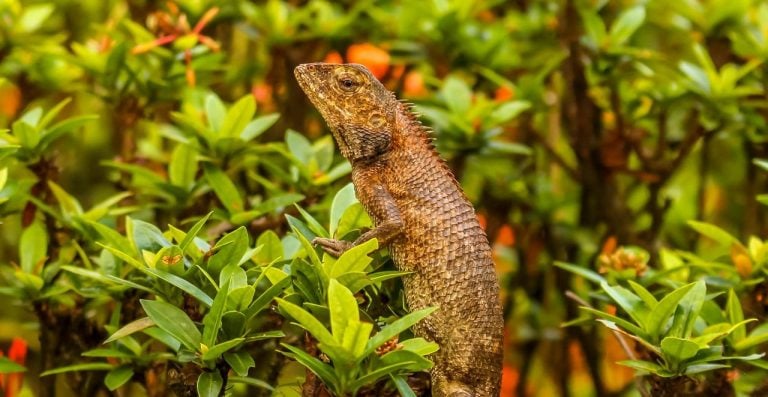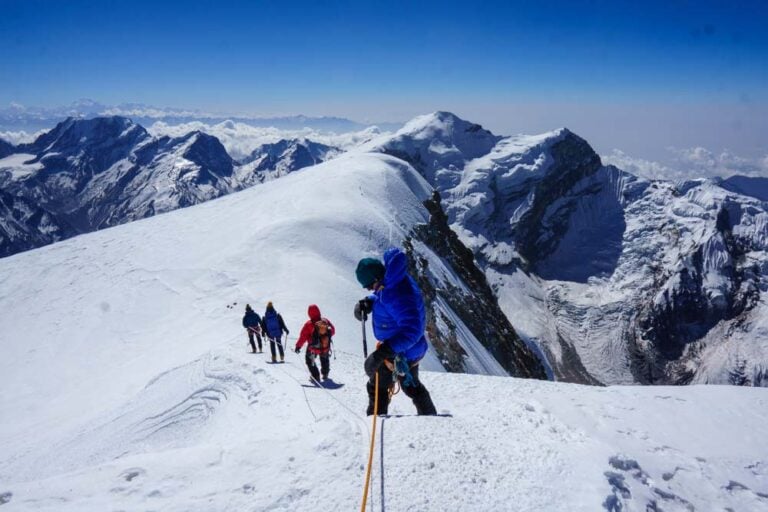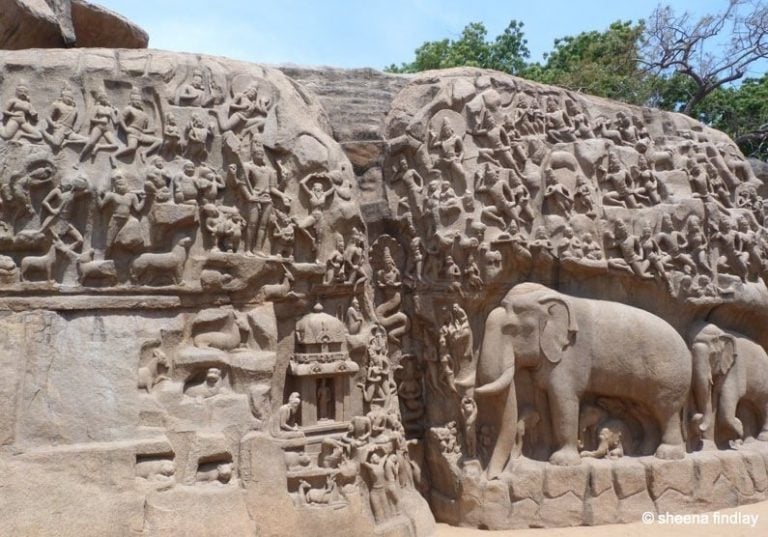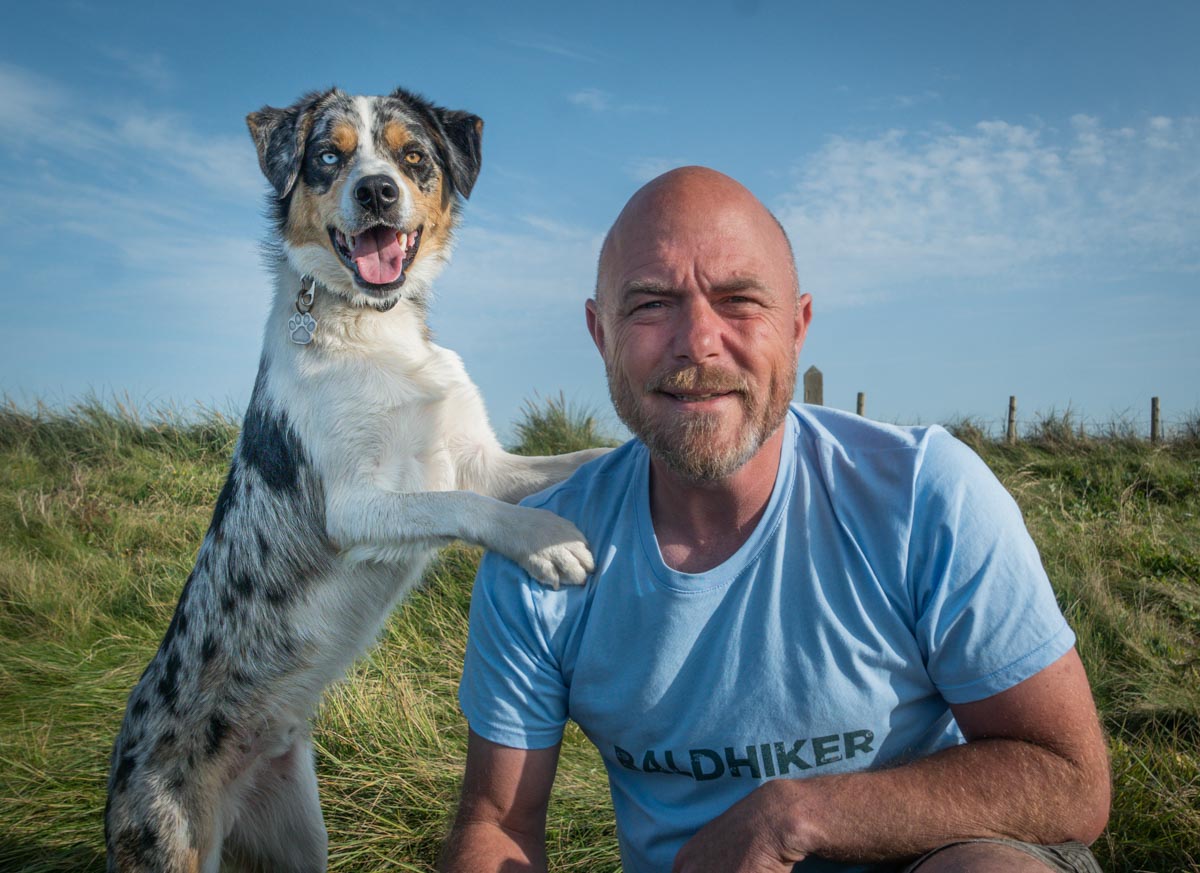Not many rivers are gods. Not many gods are rivers. But the Ganges, or more properly the Ganga is, in Hinduism, exactly that. The river is the Goddess Ganga and is scared to the estimated 1.2 million Hindus around the world.
It is thought around 400 million people live in the river’s catchment area and are reliant, in one way or another, on its waters. A trek to its source is a wonderful adventure and to many a pilgrimage. It’s been on my wish list for years – 34 years to be precise.
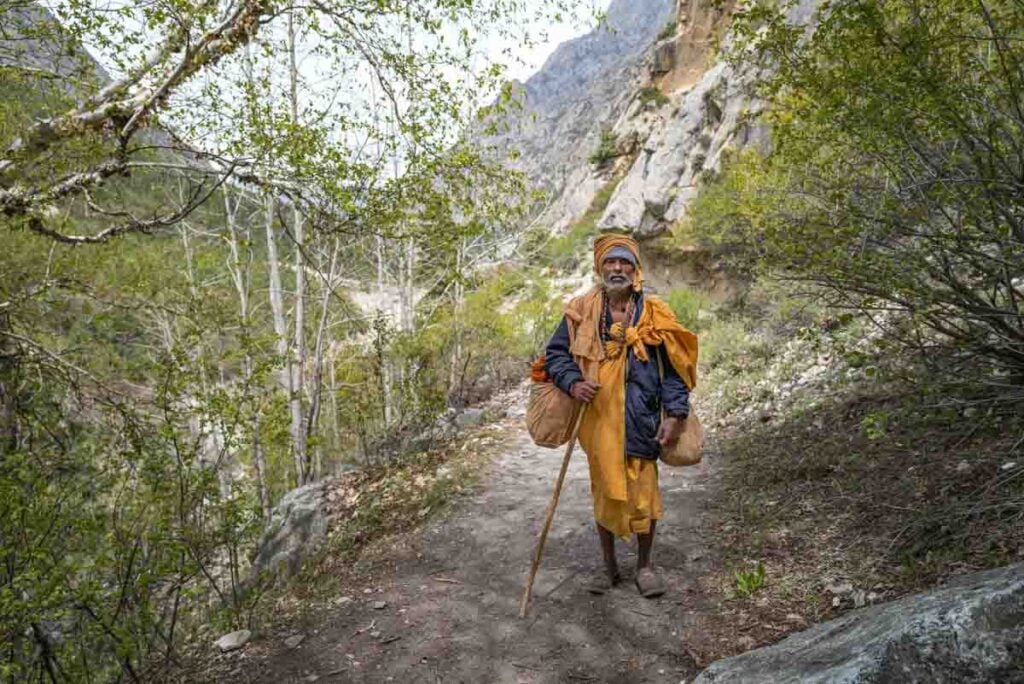
I first visited India in 1989 and travelled from Calcutta, now Kolkata, in the East and travelled West to Delhi via Varanasi and Agra. To a young lad of 25 from the UK that visit was, shall we say, ‘memorable’ – as I picked up Guardia within days of getting into Calcutta and after 25 odd days in India I had to return to the UK sick – it took me about 12 moths to recover. However, despite this, I have always wanted to return to India but life – jobs, marriage, having children, mortgages etc – always took priority.
But early in 2023 I finally put that right and, with my daughters, I revisited India. This time I especially wanted to go to the source of the Ganga.
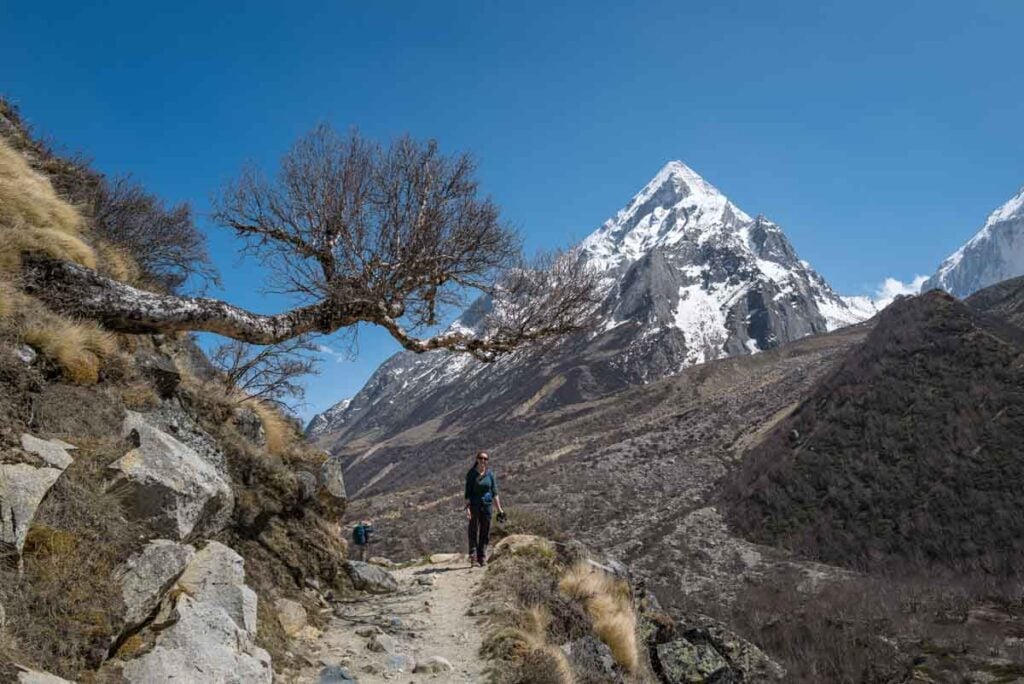
Join me on my trek to the very source of the Holy Ganga – the Gangotri glacier high in the Himalayas and the Holy mountain overlooking it Mount Shivling.
To our western eyes this was a chance to see some big geography – high mountains, glaciers, moraines – but it is also a huge cultural experience as the glacier, Mount Shivling and Gangotri, the town at the trek’s start, are all very important pilgrimage sites for Hindus. It was quite a journey.
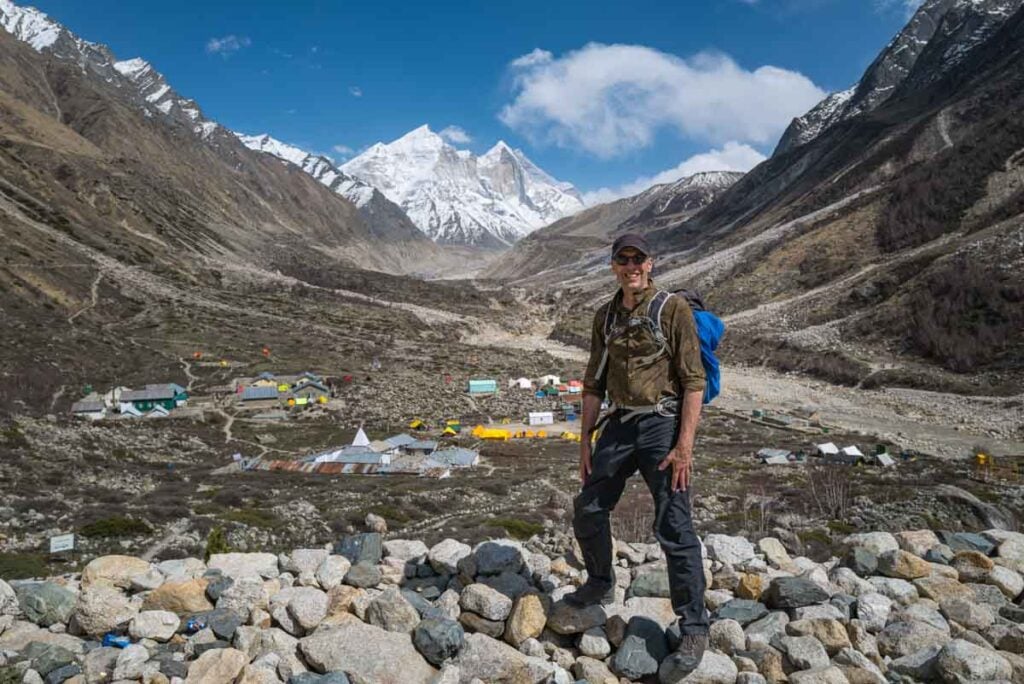
River Ganga
There are many, many myths – or truths if you are a religious Hindu – about the origin of the Ganga. I’m not an expert in Hindu mythology but I’ll try my best to relate a few.
One version outlines that the Lord Vishnu, the supreme being in Hinduism, pierced a hole in the universe with his toe, allowing goddess Ganga to flow over his feet into heaven and down to earth as the waters of the Ganges. Vishnu’s feet broke the fall of water and stopping it damaging the earth.
In another version the Goddess Ganga was intent on wreaking havoc on the earth. In order to prevent this Lord Shiva caught flow of water in the tangles of his hair and these became the sources for the River Ganges.
My favourite story is that it was the Goddess Ganga herself who was persuaded to nurture the land and the people below the Himalayas, and she asked Lord Shiva to protect the land from the force of her fall by catching her in his hair.
Whichever version you wish to believe – if you are Hindu the Ganga is a Goddess and she is scared along her whole length. Bathing in her waters can wash away your sins – being cremated on her banks, especially in Varanasi, can release you from the cycle of rebirth.
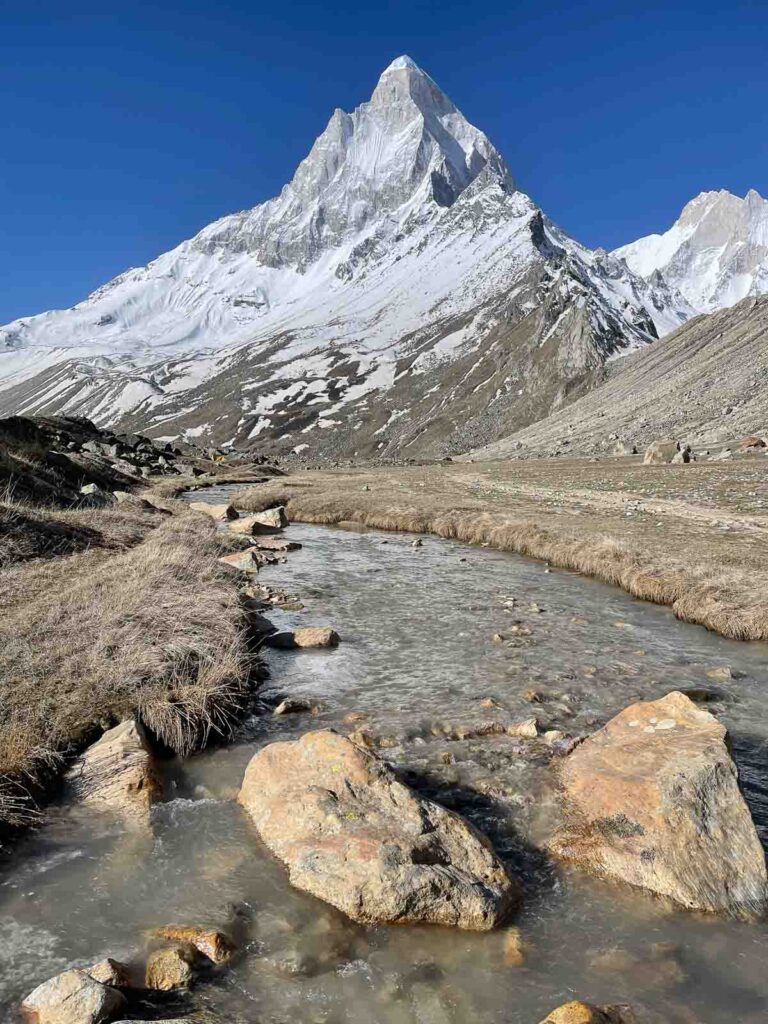
For a civilisation that has existed in the river’s catchment for at least 5000 years – this worship of the river that sustains life for almost 1500 miles is understandable. Without the river the plains of Northern India could not sustain the current population of 400 million people.
Getting There
Our trip to the source of the holy river started with a flight from Newcastle to Delhi via Dubai on Emirates. After a couple of days in Delhi we took a train to Haridwar and then a local taxi to Rishikesh at the base of the Himalayas.
Rishikesh is an interesting place – the yoga capital of India and the place where The Beatles spent time with Maharishi Mahesh Yogi.
Rishikesh is only at about 360 meters (1200 ft) above sea level, but we then started to climb into the Himalayas. We first travelled to Uttarkashi at 1158m (4,500 ft). We did an overnight stop at Uttarkashi and the next morning we were met by our trekking a guide Saurabh Singh Rana from Great Adventures Gangotri.

Saurabh is a qualified high-altitude mountaineering guide and has climbed many of the big peaks in the Himalayas. Our short and, for him, low altitude trek was just a short stroll in the park! We were in great hands.
In Uttarkashi we also our fellow trekkers Ankit and Surabhi from Delhi. We all then travelled to Gangotri (3,100 m/ 10,000 ft) before spending a night there before starting the trek to acclimatise to the altitude.
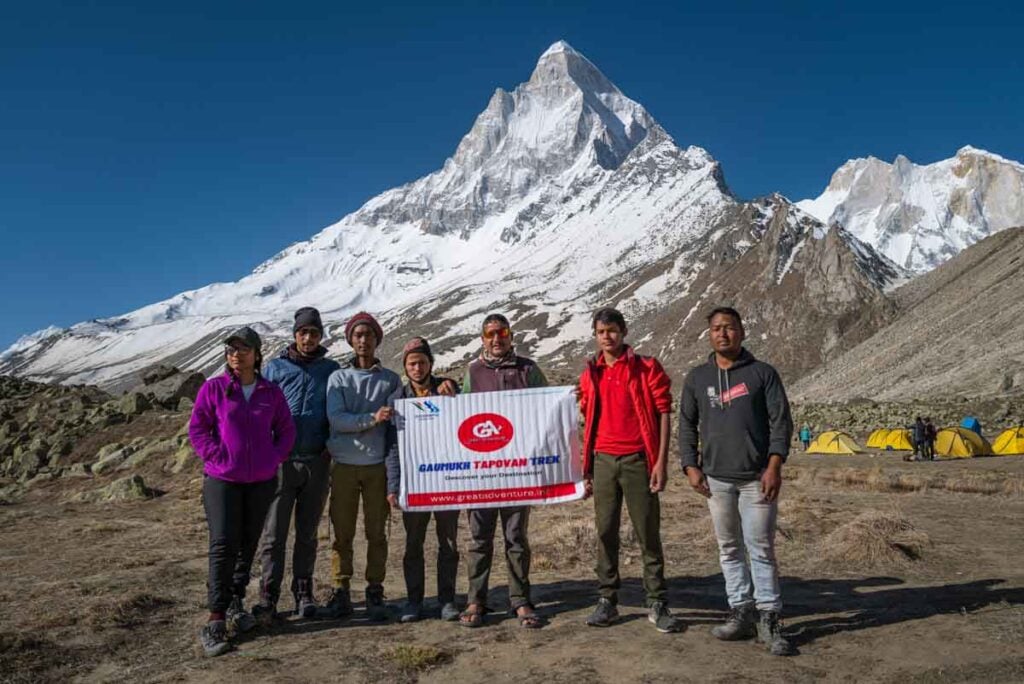
Gangotri is another fascinating small town – it is one of the four Chota Char Dham pilgrimage sites in the Indian Himalayas and, when we visited, teaming with pilgrims. This is the place where the River Goddess Ganga is believed to first have touched the earth.
You’ll have gathered by now that even getting to the start of the trek took us around a week if you include our flight from the UK. You could do it a lot faster but it’s probably at least two very long days travel from Delhi. And if you are thinking of doing it, I’d suggest at least one night rest in Gangotri before starting the trek as, although the highest point we got to was only around 4,500 meters the altitude will still make you a little breathless if you’ve just arrived from the plains near Delhi.
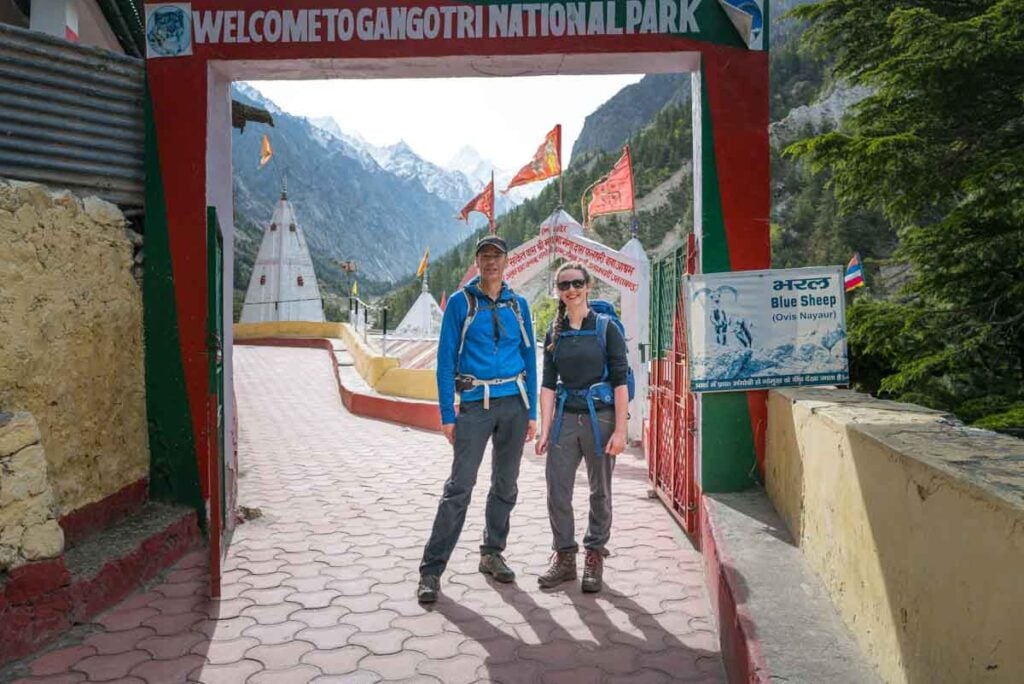
On The Trek
The next day we set off on the trek. The first day is a 14 kms walk along the side of the Ganges (called the Bhagirathi at this point) to a camp site called Bhojbasa (3,775 metres).

At first there are trees and shrubs but as you slowly climb the vegetation clears and at Bhojbasa it has pretty much just rocks and some grasses.
We camped at Bhojbasa overnight and the next morning faced a long wait for our turn to cross the river on the suspended trolley.
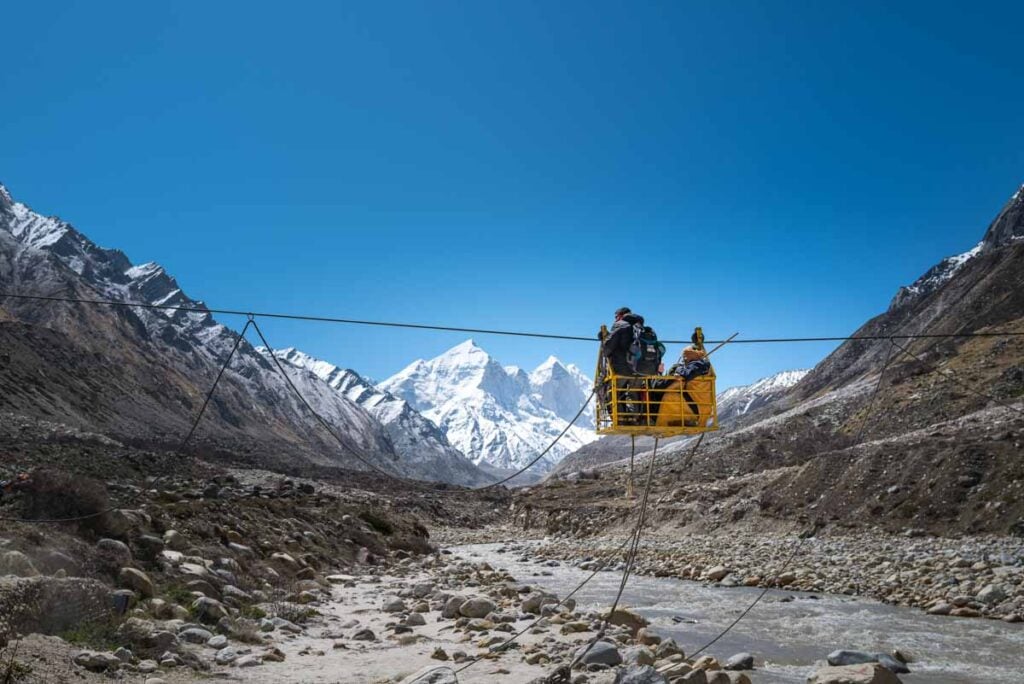
Once across we faced a long and sometimes steep walk towards the Gangotri glacier. Because of our delay getting across the river, we made straight for our high camp site, this involved a very steep climb up the lateral moraine onto the suspended valley of Tapovan (4,500 meters).
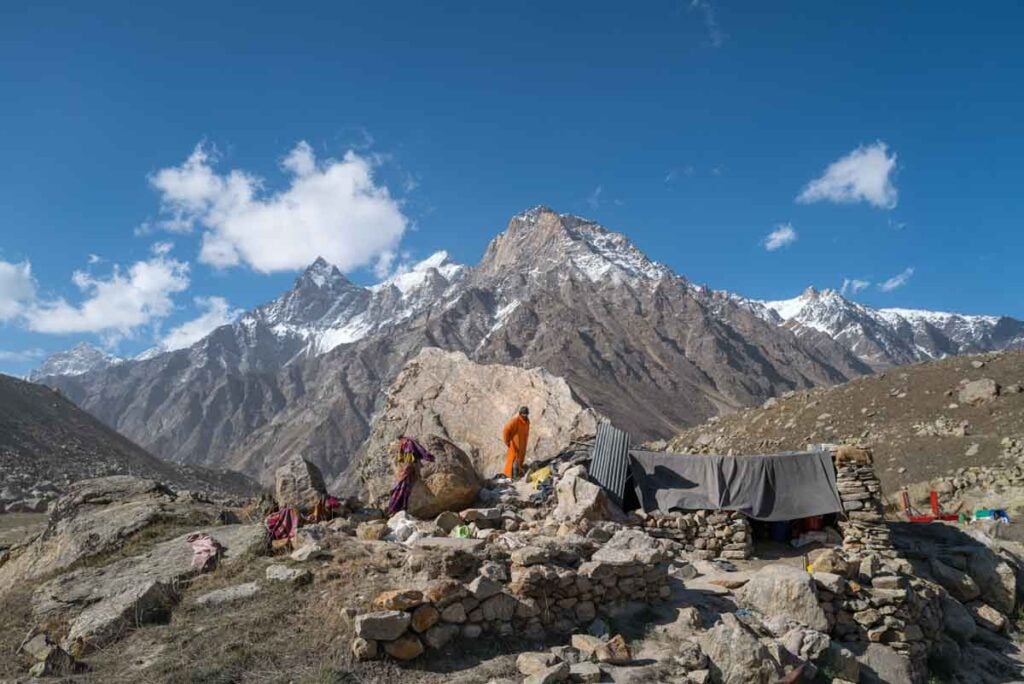
Tapovan
Tapovan is incredible. Overlooked by Mount Shivling (6,543meters) and with the small stream of ‘Sky Ganga’ flowing though it. It must be one of the most amazing camp sites in the world.
If you’re an experienced mountaineer Saurabh leads expeditions to the top of Shivling.
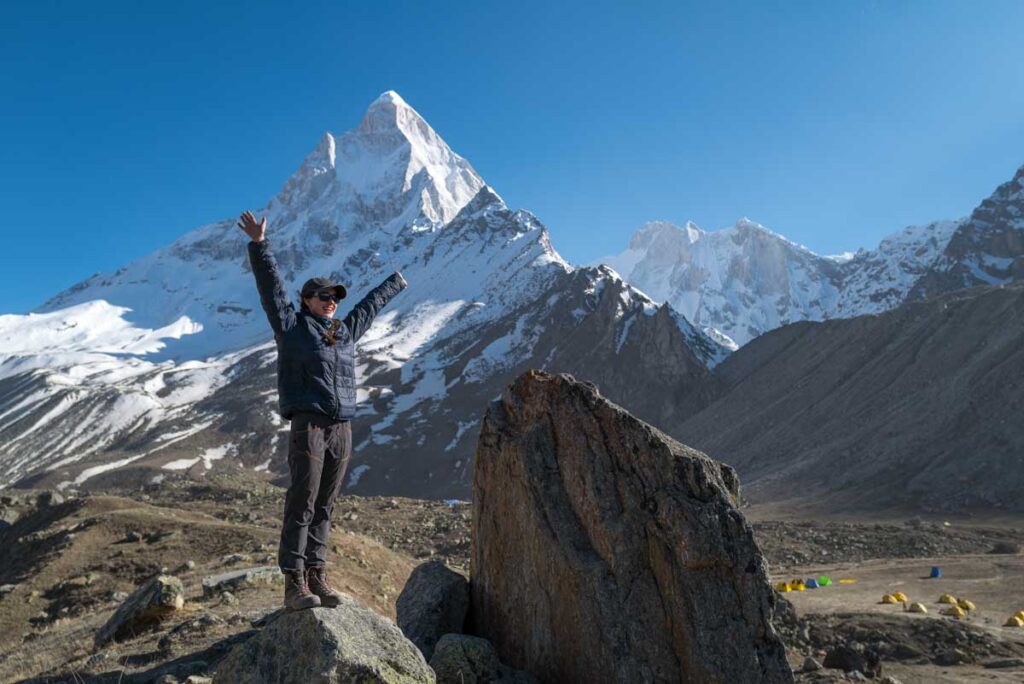
Tapovan is home to the famous Moni Baba – a Sadhu who has lived there for decades and, at least initially, did so right through winters with metres of snow covering his small rock shelter.
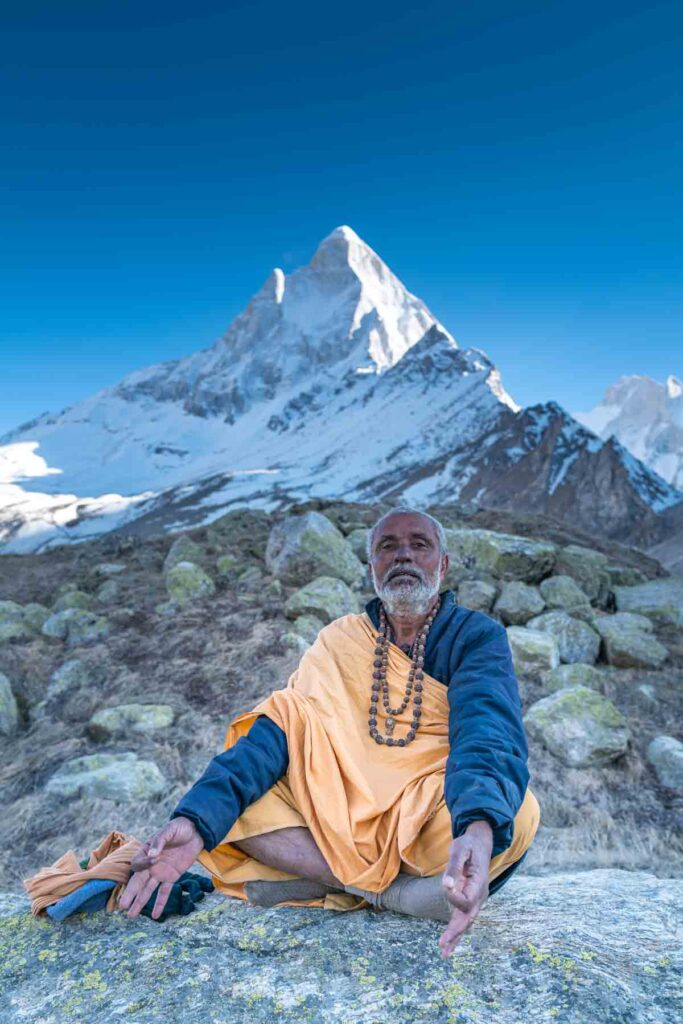
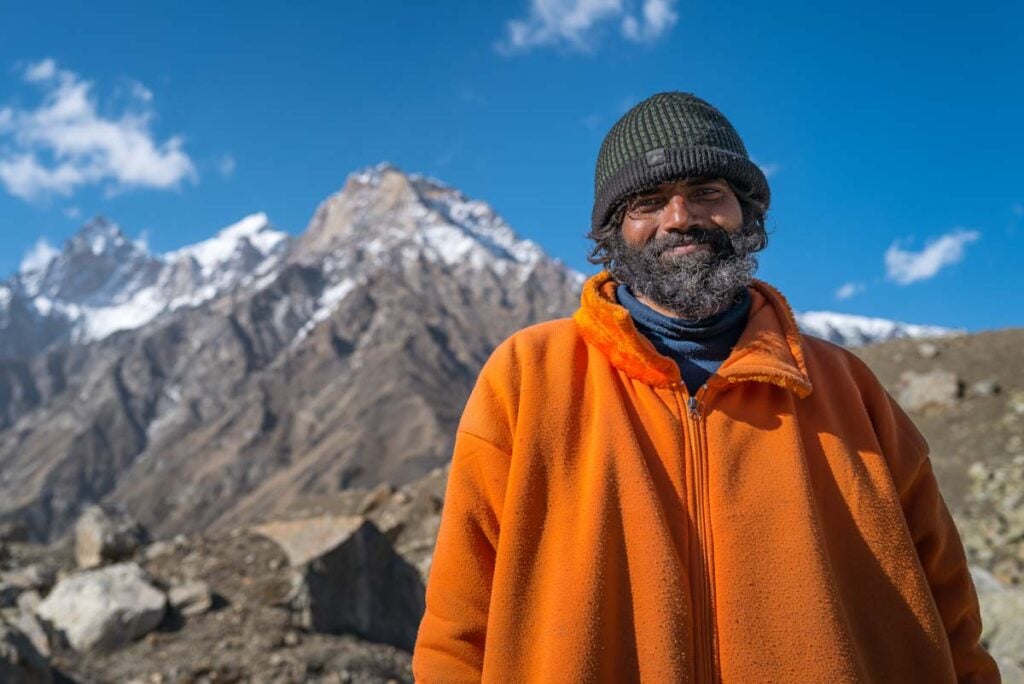
For 12 years he also didn’t speak. It was a real honour to meet and chat with him.
After a night at Tapovan we descended to Gomukh.
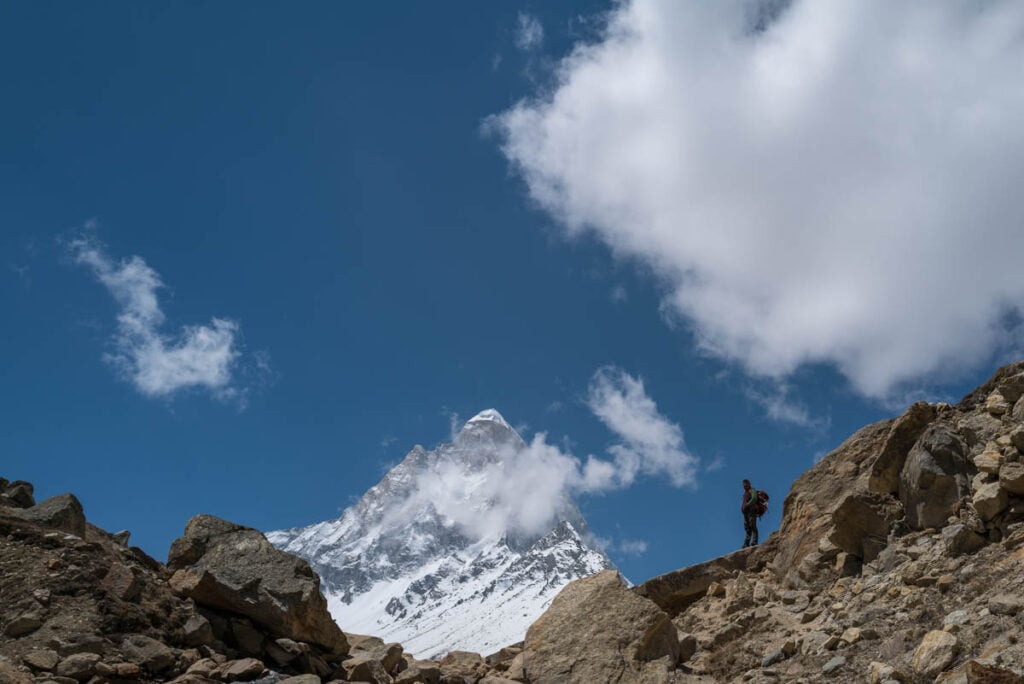
Gomukh
Gomukh is the front face of the Gangotri glacier so called because it used to look like a cow’s mouth (Gomukh means cow’s mouth in Hindi). The glacier – like most glaciers has been receding in the last few decades.

It has receded around 850 meters in the last 25 years and has probably receded around 3 kms since 1780. The glacier is still an impressive site though – in total around 30 kms long and between 2 and 4 kms wide.
From Gomukh we returned to Bhojbasa – a long dusty walk down the valley floor surrounded by glacial deposits – a geologist’s dream.
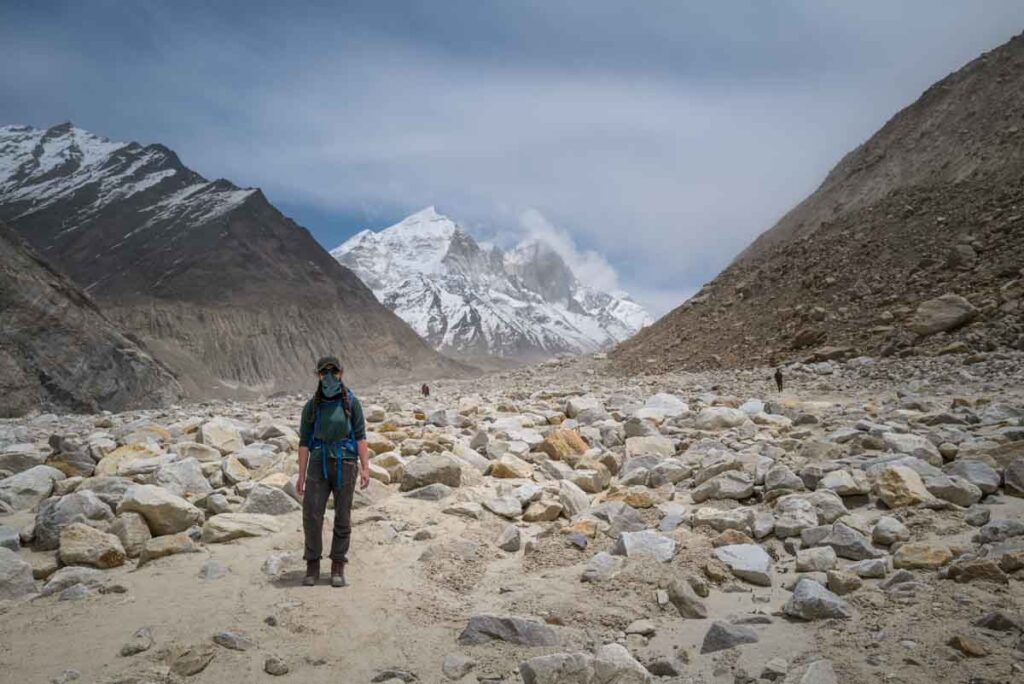
Once back across river on the suspended trolly we spent another night camping at Bhojbasa before returning to Gangotri.
Conclusion
I’d thoroughly recommend the Indian Himalayas and especially the Gaumukh Tapovan trek – although lower and less well known than the classic Nepalese’s routes – they are hugely interesting, especially from a cultural perspective.
FAQs
Is the Gaumukh Tapovan trek difficult?
With altitude and climbs this trek is considered medium to hard. With enough physical preparation it is achievable for beginners with a guide.
What is the best time to do the Gaumukh Tapovan trek?
The weather is best for doing the Gaumukh Tapovan trek in May/June and September/October.
What distance is the Gaumukh Tapovan trek?
The Gaumukh Tapovan trek is a total of 47 km however this is high altitude and with steep and rocky climbs so distance is not relative to normal hiking.

